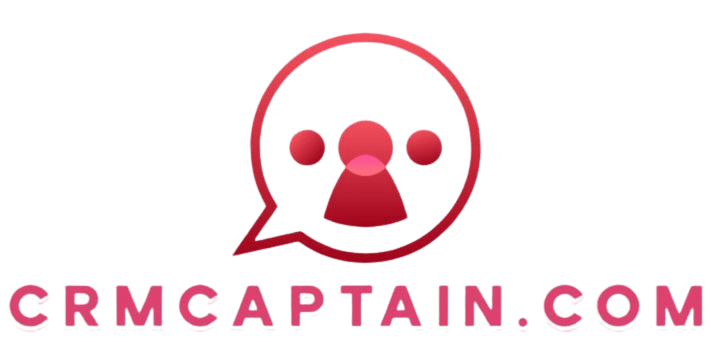What is the Significance of CRM Analytics?
In today s competitive landscape, understanding and leveraging customer relationships is essential for your business success. CRM analytics acts as a powerful ally that enables you to unlock valuable insights about your customers.
This article will guide you through the definition and purpose of CRM analytics. You ll explore its pivotal role in enhancing customer relations, as well as the various types available, including descriptive, predictive, and prescriptive analytics.
We ll delve into the implementation process, key metrics that measure success, and challenges you might encounter in maintaining data quality and privacy.
Dive in and discover how CRM analytics can revolutionize your approach to customer engagement and drive growth for your business.
Contents
- Key Takeaways:
- Understanding CRM Analytics
- The Role of CRM Analytics in Business
- Types of CRM Analytics
- Descriptive, Predictive, and Prescriptive Analytics
- Implementing CRM Analytics
- Key Steps and Considerations
- Measuring Success with CRM Analytics
- Key Metrics and Indicators
- Challenges and Limitations of CRM Analytics
- Frequently Asked Questions
Key Takeaways:

CRM analytics collects and analyzes customer data. It helps improve relationships, driving significant benefits for businesses.
Understanding CRM Analytics
CRM analytics represents a careful examination of customer data using diverse analytical techniques to refine your customer relationships and inform business decisions.
By harnessing both operational and analytical CRM software, you can unearth invaluable insights into the customer journey. This enables you to optimize marketing channels and elevate customer satisfaction to new heights.
This approach enhances your understanding of customer demographics and plays a pivotal role in predictive modeling and finding patterns in data.
By anticipating customer needs effectively, you can significantly refine your overall strategies and drive your business forward.
Definition and Purpose
The essence of CRM analytics lies in the systematic examination of customer data to enrich relationships and shape strategic business decisions. This analytical framework offers you invaluable insights into customer behavior, enabling you to refine your marketing efforts and elevate engagement.
By diving into customer interactions, preferences, and purchasing habits, you can unearth trends and patterns that guide your strategies. Predictive modeling is vital as it helps you anticipate future customer actions, allowing you to address needs proactively and fine-tune your service offerings.
By leveraging advanced data mining techniques, CRM analytics allows you to differentiate meaningful insights from mere noise. This fosters more knowledge-based decision-making and enhances customer experiences.
This, in turn, drives both sales growth and customer retention, creating a formidable advantage for your business.
The Role of CRM Analytics in Business
The role of CRM analytics in your business is crucial for elevating customer relationships and driving satisfaction. By diving into customer interactions across diverse marketing channels, you can optimize your sales pipeline, customize marketing campaigns, and enhance customer engagement.
CRM analytics enables you to monitor churn rates and refine your customer retention strategies, allowing your organization to respond effectively to customer feedback and adapt to their ever-evolving needs.
Benefits and Impact on Customer Relations
The benefits of CRM analytics are extensive, especially when it comes to enhancing customer satisfaction and nurturing better customer relationships.
By harnessing data-driven insights, you can tailor your strategies to create more meaningful interactions with clients. This analytical approach not only helps you anticipate customer needs but also significantly boosts engagement rates.
As you refine your communication and offer personalized solutions, you ll notice an increase in loyalty and retention. The impact extends into your sales pipeline; CRM analytics streamlines processes, enabling you to track potential leads more effectively and optimize follow-ups.
This boosts your conversion rates dramatically and strengthens your sales strategy, demonstrating the pivotal role CRM analytics plays in propelling your business growth.
Don’t wait start harnessing CRM analytics today to transform your customer relationships!
Types of CRM Analytics

You will encounter three primary types of CRM analytics: descriptive analytics, predictive analytics, and prescriptive analytics.
Each serves a unique purpose in enhancing your understanding of customer behavior and refining your business outcomes.
Descriptive, Predictive, and Prescriptive Analytics
Descriptive analytics helps you understand what has happened in the past. Predictive analytics looks ahead, forecasting future behaviors. Prescriptive analytics then offers tailored recommendations for action.
Each type of analytics plays a vital role, enabling you to gain a thorough understanding of your operations. For example, with descriptive analytics, you can tap into historical sales data to identify patterns, such as seasonal purchasing spikes. This allows you to optimize your inventory and marketing strategies effectively.
In contrast, predictive analytics uses computer programs that analyze patterns in data, enabling you to project potential future buying habits based on various factors like social media activity and economic indicators.
Finally, prescriptive analytics provides you with actionable insights drawn from this data, such as targeted promotions during peak seasons, enabling you to make informed decisions that enhance customer satisfaction and drive revenue growth.
Implementing CRM Analytics
Implementar an lisis de CRM requiere que sigas varios pasos clave que garantizar n que utilices efectivamente los datos para mejorar las relaciones con los clientes y aumentar el rendimiento empresarial.
Key Steps and Considerations
Key steps for implementing CRM analytics include selecting the right software, ensuring high data quality, and establishing clear metrics for tracking performance.
Act now to ensure you choose the best software for your needs. The right choice can transform your customer relationships!
Data quality is paramount; it must be accurate, consistent, and up-to-date to ensure reliable analytics.
Establishing clear metrics is vital, as this practice allows you to evaluate success objectively and make informed adjustments. By concentrating on these areas, you can effectively harness the power of CRM analytics to enhance customer relationships and drive impressive growth.
Measuring Success with CRM Analytics
Measuring success through CRM analytics involves identifying and analyzing key metrics that truly capture the effectiveness of your customer engagement strategies.
By focusing on these specific indicators, you can gain valuable insights into how well your efforts resonate with your audience.
Key Metrics and Indicators

Key metrics and indicators such as the Net Promoter Score, customer satisfaction ratings, and churn rate are vital for assessing the effectiveness of CRM analytics. These metrics act as essential barometers for understanding customer sentiment and loyalty, while also highlighting potential areas for improvement.
The Net Promoter Score measures how likely your customers are to recommend your brand to others, giving you insights into their overall satisfaction.
Customer satisfaction ratings provide a direct gauge of how well you meet your clients’ expectations, and the churn rate reveals the percentage of customers who decide to discontinue your service, shedding light on retention challenges.
You can track these metrics through surveys, feedback forms, and customer interactions, all of which offer valuable data. This information can significantly enhance your communication strategies, foster lasting relationships, and ultimately lead to better business outcomes.
Challenges and Limitations of CRM Analytics
While CRM analytics provides a wealth of benefits, it also brings with it a set of challenges and limitations that you must carefully navigate to ensure effective data utilization.
Understanding these challenges can help you turn obstacles into opportunities for growth.
Addressing Data Quality and Privacy Concerns
Addressing data quality and privacy concerns is crucial for successfully implementing CRM analytics. To cultivate a trustworthy environment, adopt complete data management methods that include regular audits and validation processes.
Ensuring that your data is accurate, complete, and timely enhances your analytic capabilities and fosters customer trust. It’s vital to adhere to regulatory standards such as GDPR (General Data Protection Regulation) and CCPA (California Consumer Privacy Act), which protect sensitive information.
Implementing strategies like data encryption and anonymization safeguards client records while still allowing you to derive valuable insights. Embracing a holistic approach that combines strong data practices with a commitment to privacy will ensure sustainable success in your CRM initiatives.
Frequently Asked Questions
What is the significance of CRM analytics?
CRM analytics is a tool that helps businesses analyze customer data and behavior to make informed decisions and improve customer relationships.
How does CRM analytics help businesses?
CRM analytics enables businesses to understand their customers better, identify patterns and trends, and make data-driven decisions that improve customer satisfaction and retention.
What types of data can be analyzed using CRM analytics?
CRM analytics can analyze various customer data, such as demographics, purchase history, interaction history, and social media activity.
Is CRM analytics only useful for large businesses?
No, CRM analytics can benefit businesses of all sizes. It helps small businesses gain valuable insights about their customers and make informed decisions.
Can CRM analytics be integrated with other business tools?
Yes, CRM analytics can integrate with other business tools such as marketing automation software, customer service software, and sales management systems to streamline processes and improve efficiency.
How does CRM analytics impact customer relationships?
CRM analytics allows businesses to understand their customers on a deeper level and tailor their interactions and offerings accordingly. This ultimately leads to improved customer satisfaction and stronger relationships.







